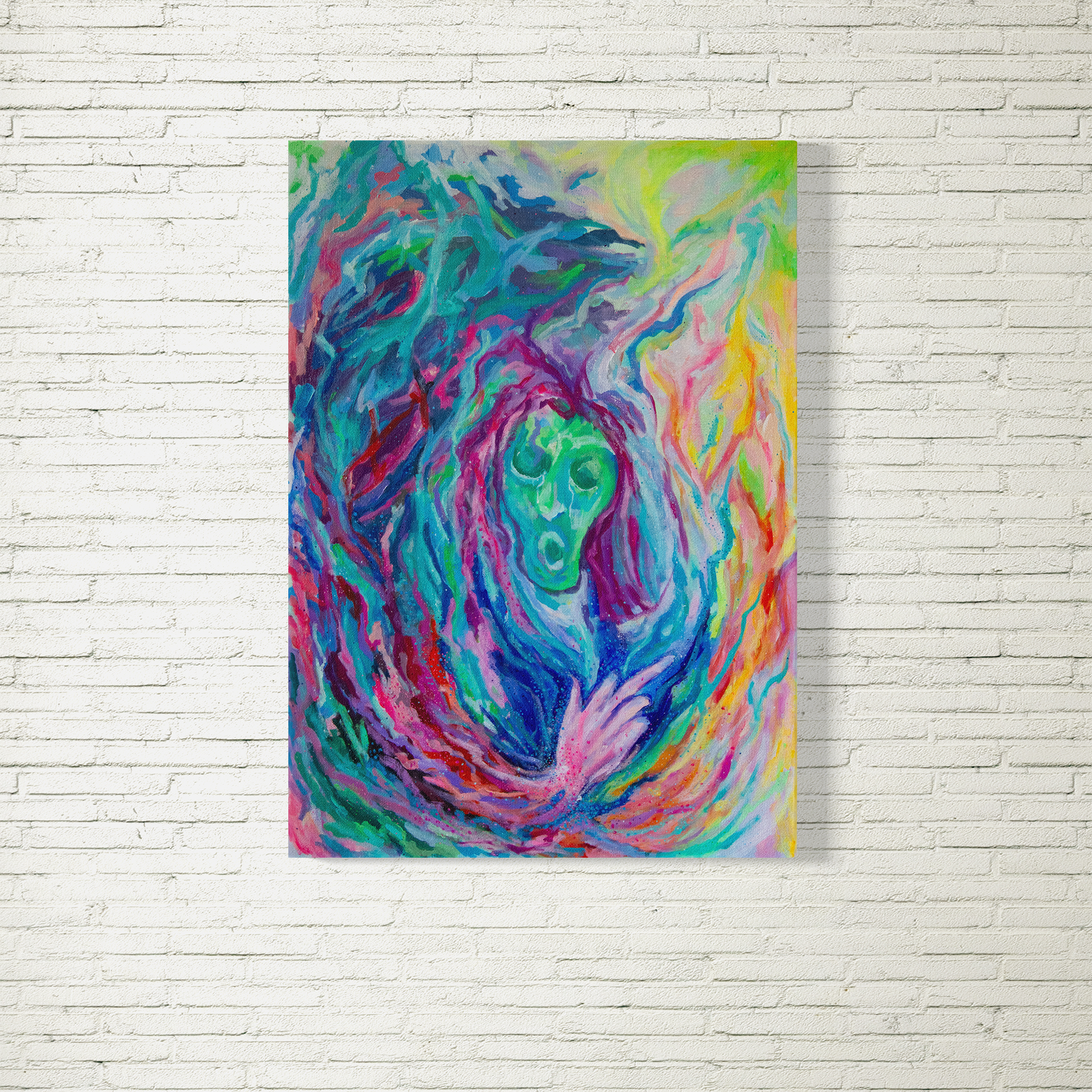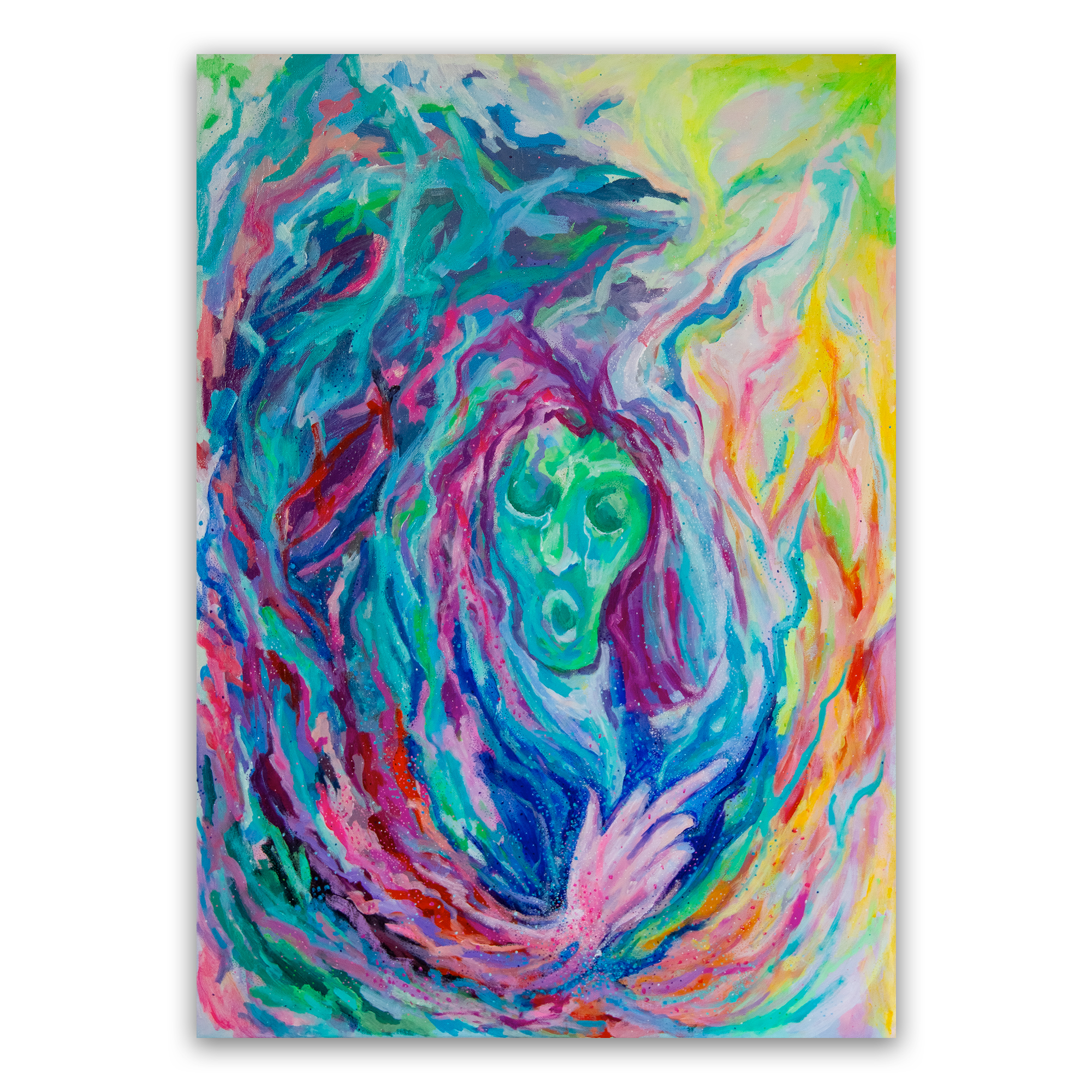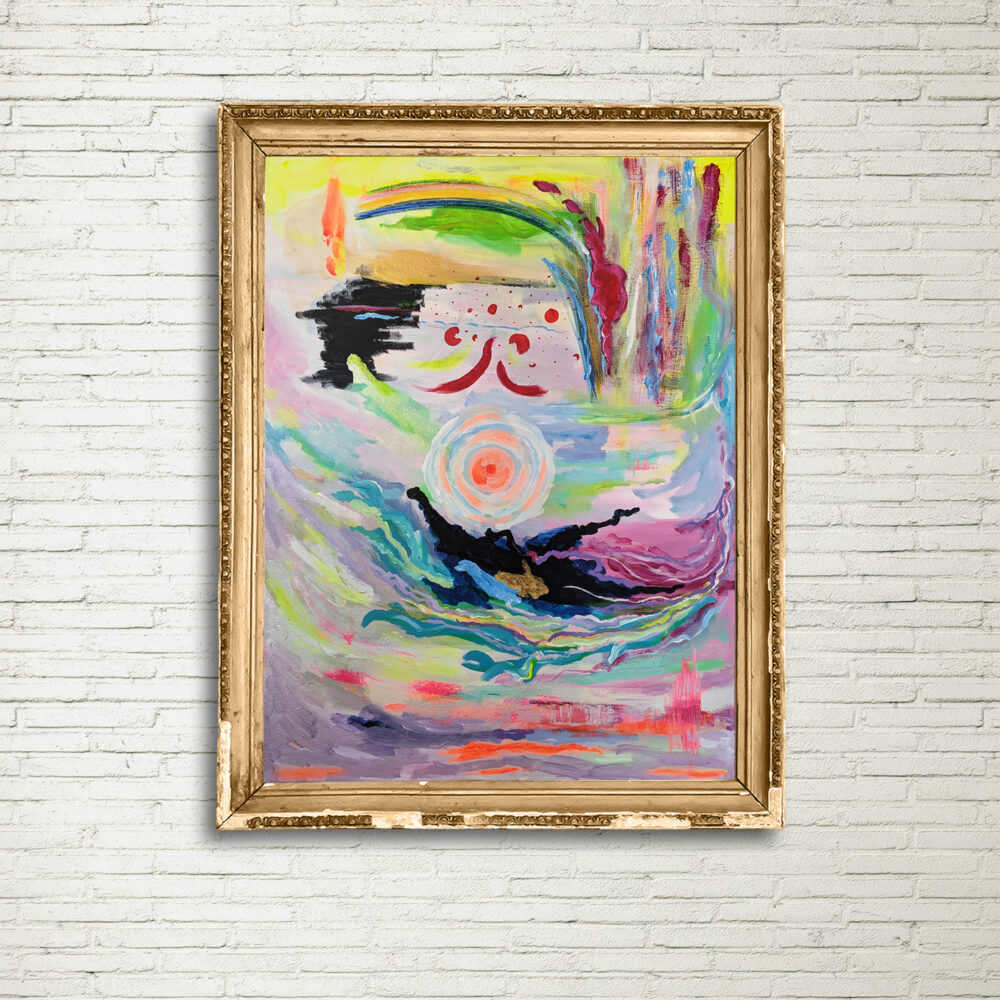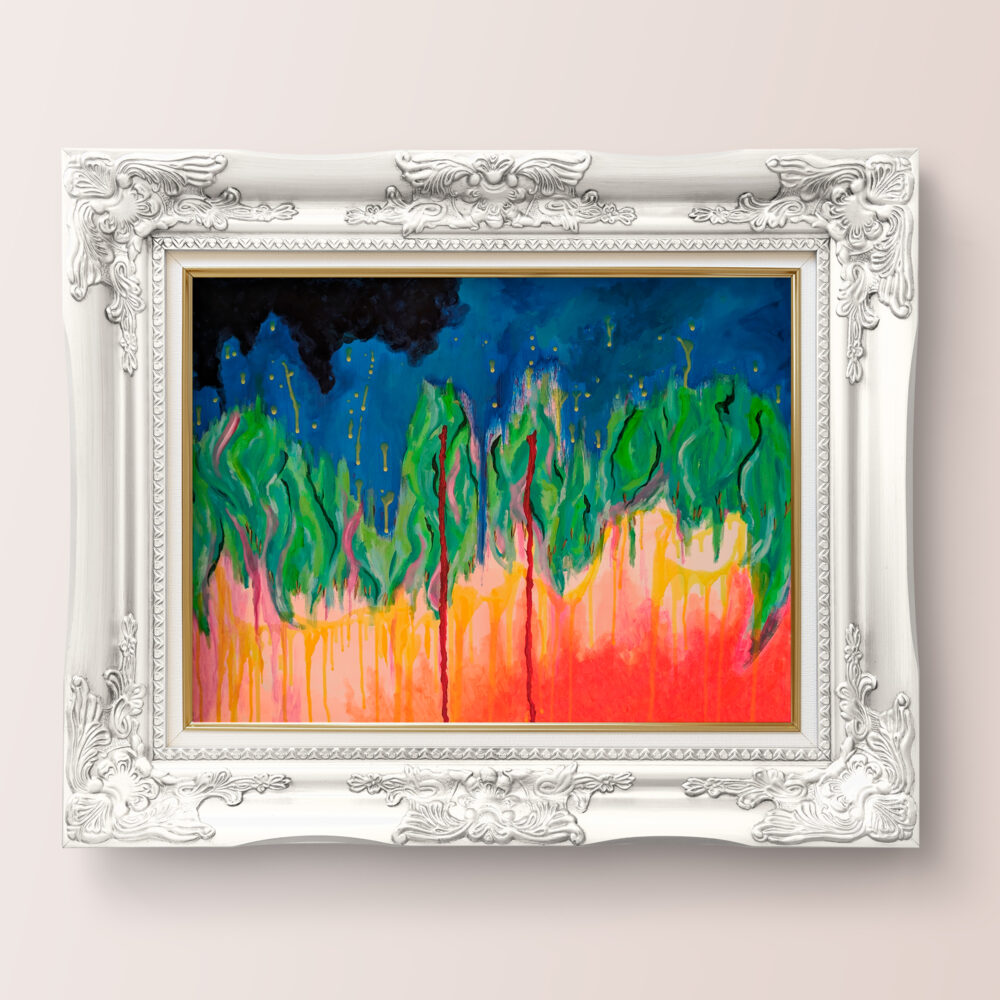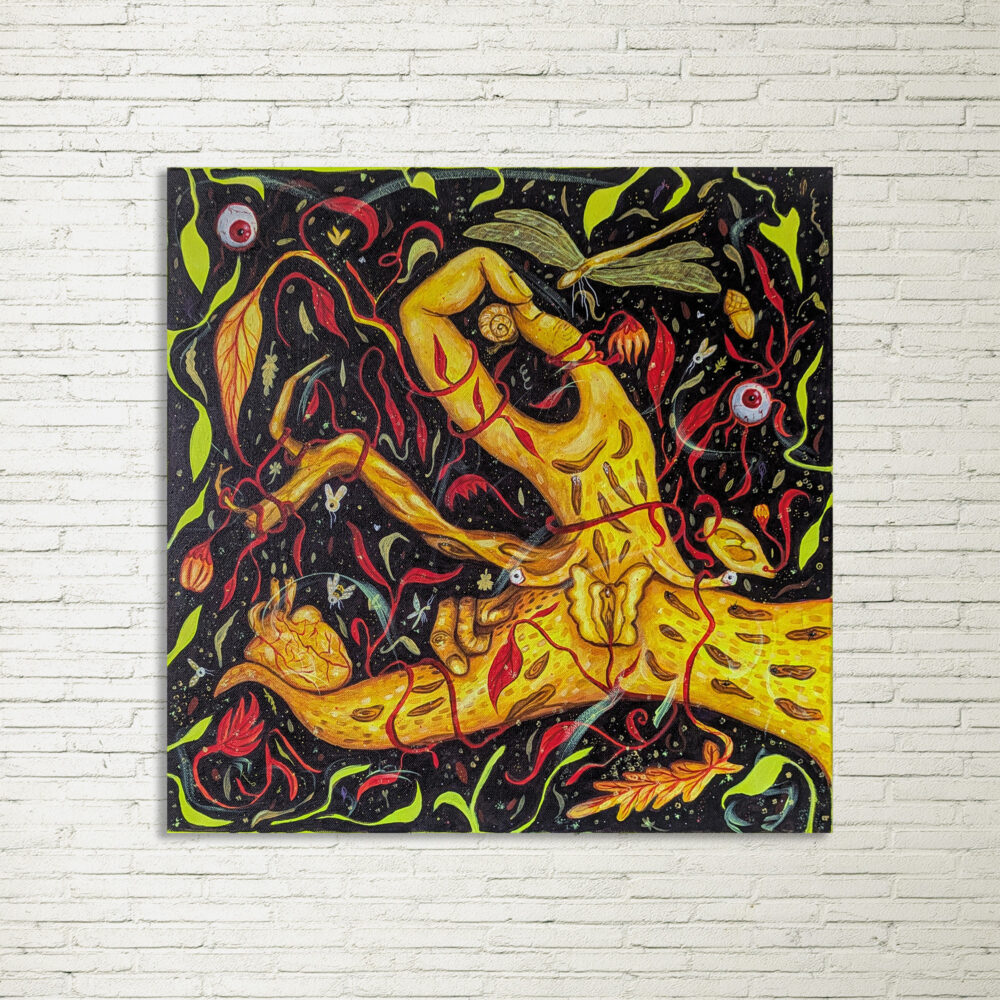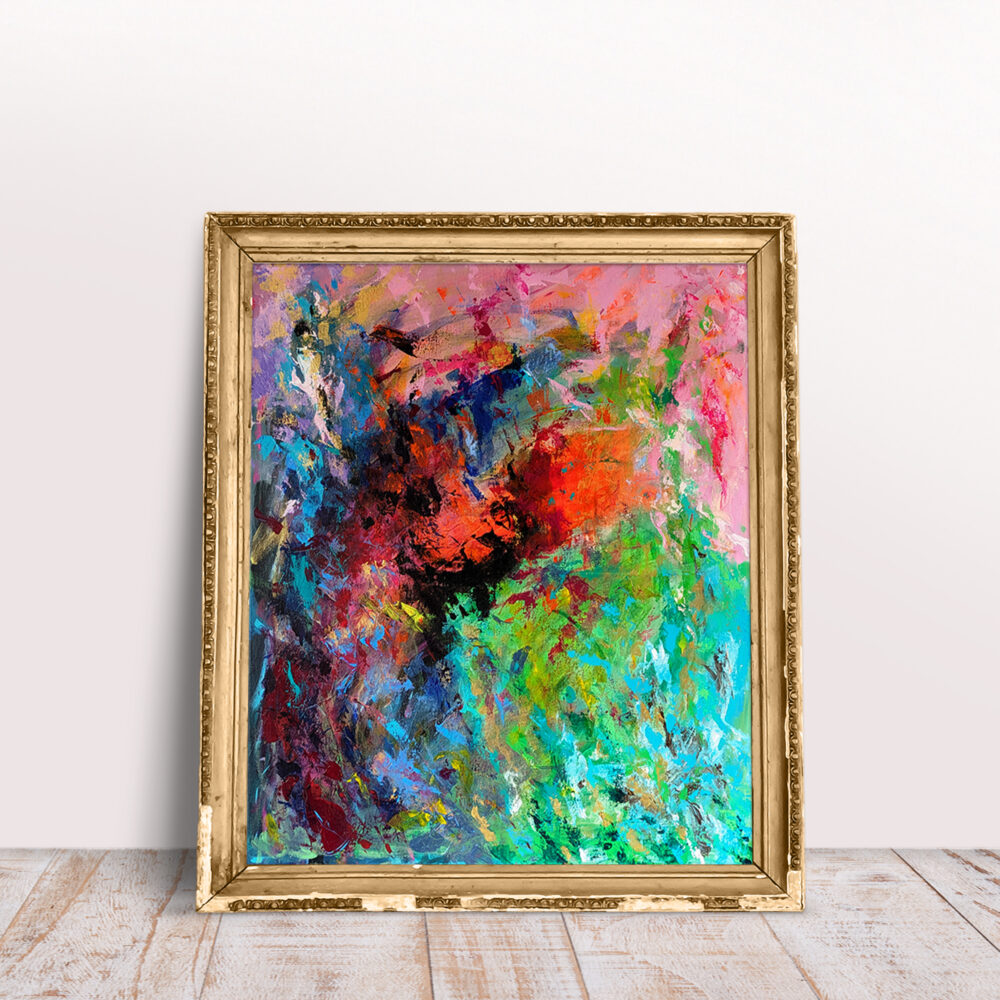Urlo di Fu(n)ck
Additional information
| Weight | 2 kg |
|---|---|
| Dimensions | 65 × 90 × 1,5 cm |
| Date | 2023 |
| Support | Canvas |
| Technique | Acrylic |
| Varnish | Glossy |
Description
At a distance of 130 years from the creation of Edvard Munch’s “The Scream,” it seems that emotions such as anguish, bewilderment, and fear have not vanished from the human soul. Unfortunately, every era has its disturbances, especially in the minds of the most sensitive.
The figure screaming and contorted by emotions can evoke dismay and discomfort, associating it with the original figure painted by Munch (himself).
At a distance of 130 years from the creation of Edvard Munch's "The Scream," it seems that emotions such as anguish, bewilderment, and fear have not vanished from the human soul. Unfortunately, every era has its disturbances, especially in the minds of the most sensitive.
The figure screaming and contorted by emotions can evoke dismay and discomfort, associating it with the original figure painted by Munch (himself).
However, in this chaos of colours/feelings, a proud middle finger emerges, a symbol of reacting, mentally but also physically. The symbol of that so powerful energy that the necessity to survive, live, and rebel gives us.
And that's why the atmosphere here is not so distressing as in Munch's painting. Here, the character, portrayed in his emotional and abstract inner world, does not close in himself as Munch does, pouring anguish in and outside himself into the surrounding landscape. Here, the character reacts. Oh yes, he reacts, and "quite" visibly.
The middle finger directs the gaze towards the "happy internal confusion," the liberating part represented by brighter colours. Often, only by listening to ourselves to find the strength to react, we might free ourselves from what distresses us and find happily relieving alternatives and solutions. The middle finger is sometimes necessary. Symbolic as it may be. We should wisely use it more often.
